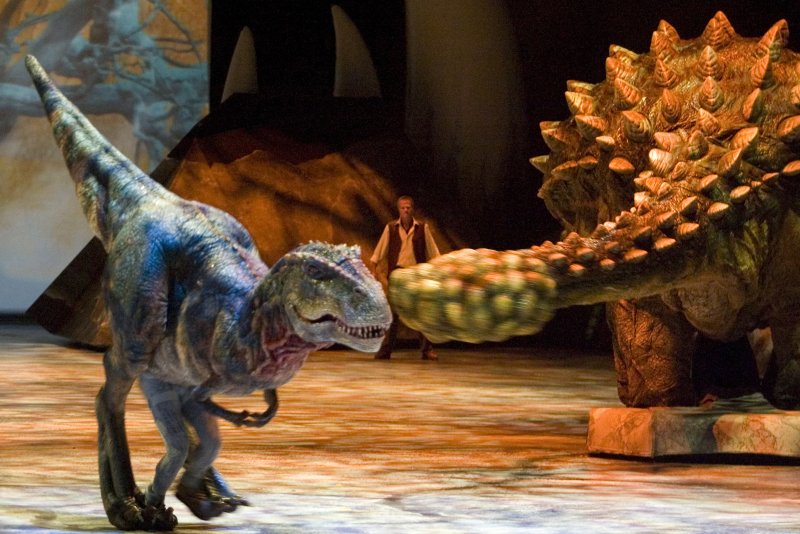New research suggests
Tyrannosaurus rex was rather slow. Photo by Jim Bryant/UPI |
License Photo
July 18 (UPI) -- The relationship between speed and size among animals plots a bell curve on a graph. At a certain point, size becomes a liability, not an asset.
Such was the case for Tyrannosaurus rex. New research suggests the large dino species was a rather slower runner. In fact, he was mostly a walker.
For small and medium sized animals, the larger the species the faster it can move. A rabbit is faster than a beetle; a fox is faster than a rabbit; and a cheetah is faster than fox. But a giraffe isn't faster than a fox. Nor is an elephant.
Scientists at the Friedrich Schiller University Jena developed a model to formulate the relationship between speed and size and predict the pace of extinct species. The simple model can predict the top speeds of an animal with 90 percent accuracy using two inputs, the animal's weight and the medium in which the animal travels.
"The best feature of our model is that it is universally applicable," Myriam Hirt, a researcher at the University of Jena, said in a news release. "It can be performed for all body sizes of animals, from mites to blue whales, with all means of locomotion, from running and swimming to flying, and can be applied in all habitats."
The model suggests T. rex maxed out at 17 miles per hour.
To confirm the accuracy of their model, researchers compared their results to the predictions of more complex models that use sophisticated biomechanical algorithms to simulate an extinct species' running speed.
The results of the more complicated models jived with predictions of the simpler formula, yielding similar top speeds for Triceratops, Tyrannosaurus, Brachiosaurus and other types of dinosaurs.
"This means that in future, our model will enable us to estimate, in a very simple way, how fast other extinct animals were able to run," Hirt said.
The researches shared their new formula this week in the journal Nature Ecology and Evolution.















